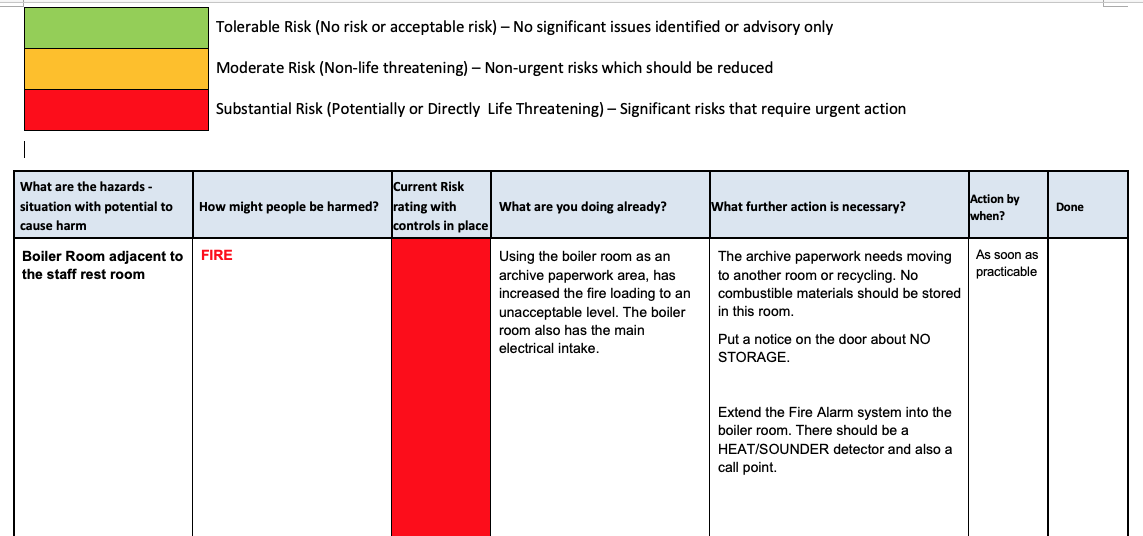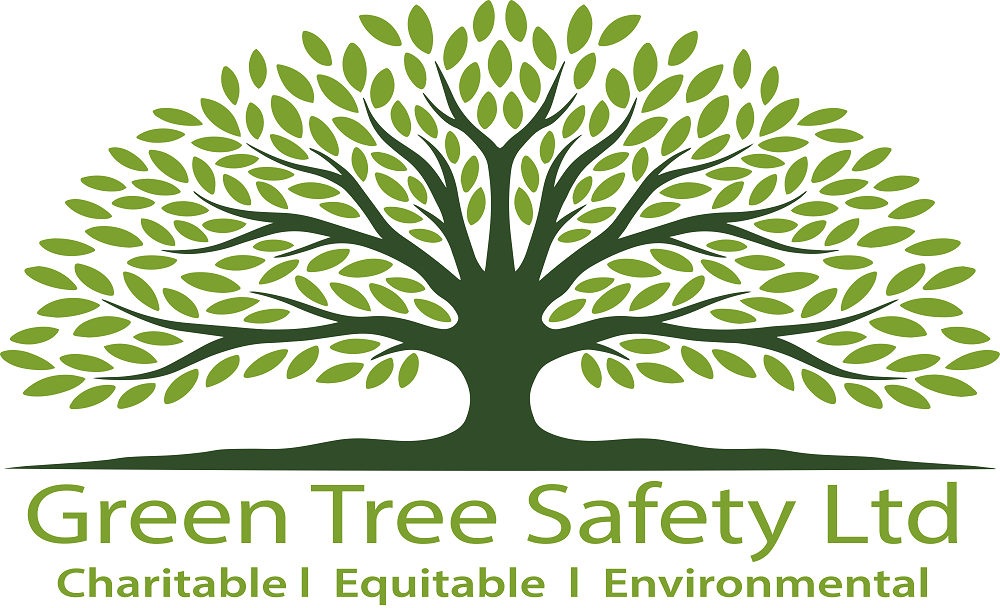Fire Risk Assessments
Since 2006 Green Tree Safety has completed over 8,500 fire risk assessments for organisations across a wide range of industries. We specialise in the safety of office and tower blocks, as well as any buildings with sleeping accommodation.
We are experts in the field of fire safety and our NEBOSH & Institute for Fire Engineers qualified consultants use the latest PAS79 guidance to ensure all assessments are carried out to the highest quality. We work closely with Architects and Surveyors to provide full Fire Strategies, from design to full installation.
Should the assessment highlight any problems, for example with fire alarm systems, emergency lighting or extinguishers, we can arrange for one of our experienced engineers to complete any remedial work and bring you up to standard.
When your assessment is complete, we can also provide your staff with Fire Marshall and Fire Warden training to help you maintain those high standards and enhance the day-to-day protection of your business.
WHY GREEN TREE SAFETY?
Save time, money and lives with Green Tree Safety
Green Tree Safety provides you with a demonstrable, legally-compliant risk assessment, written in plain English. As your risk assessment should form the framework for all fire precautions in your buildings, we will take the time to ensure you understand it fully and are aware of any and all identified risks.
We use a simple traffic light colour coding system (see example below) to help you clearly define the potential risks to people and your business.
Each area assessed will be listed, along with a description of the risks and how people may potentially be harmed. It will then be designated a current colour rating, including a description of any further action to be taken and when it should be done by.

THE RISK ASSESSMENT PROCESS
Green Tree Safety’s fire consultants will complete the process of identifying fire hazards and possible sources of ignition.
Awareness of the fire tetrahedron and the most common causes of fire is essential; for a fire to happen, it needs a source of ignition, a source of fuel and supply of oxygen. Ignition sources and fuel must be kept apart, removed or eliminated to reduce the risks to both people and your business.
To do this, we first identify possible sources of ignition, fuel and oxygen in your premises. All premises will contain heat and or ignition sources; some will be obvious such as cooking appliances or open fires, whereas others will be less apparent such as heat from chemical processes (exothermic) or electrical devices.
Potential Sources of Ignition
- Faulty electrical fittings and defective or misused electrical equipment – light bulbs too close to combustible materials, defective electrical extension leads and adapters, broken or damaged wiring, etc.
- Any open flames, including the use of matches, lighters, candles, etc.
- Possible flames or sparks from a working practice, such as welding.
- Sources of frictional heat, typically from moving parts.
- Potential electrostatic discharges/sparks.
- Any heat-generating appliance, such as ovens, furnaces, kilns, open hearths, incinerators, portable heaters, boilers, engines, etc.
- Additional cooking equipment, such as toasters, microwaves, deep fat fryers, etc.
- Arson must also be considered.
Potential Sources of Fuel
These can be separated into two main groups; combustible fuels such as paper, cardboard and wood, or highly flammable fuels such as petrol, thinners, solvents, polyurethane foam such as building cladding panels.
Possible Unsafe Situations
These are hazards that may assist a fire to develop in your workplace – for example, if there are lots of areas with a high fire loading (paper, cardboard, any flammable), or open staircases that can cause a fire to spread swiftly, resulting in trapping persons and an increased risk to the whole building.
One hazard that is often overlooked yet is the simplest to correct, is poor housekeeping. This alone is responsible for starting numerous small fires every year and also significantly increases the risk of any fire spreading to involve far more of the premises than was necessary.
The is by no means an exhaustive list, and is given merely as a guide.
The penalty for not having a Fire Risk Assessment can be prosecution with an unlimited fine in the event of a major incident. Ultimately, in the event of loss of life, you can be sent to prison under the corporate manslaughter act.
CLIENT TESTIMONIAL – STEVE BLOOMER – ACORN MEDIA MARKETING
"Paul and his team from Green Tree Safety were brilliant. He worked with us to design our Fire system in such a way that enabled us to save thousands of pounds. His team installed our fire system quickly and efficiently. They have been looking after all of our health and safety for a number of years. I would highly recommend their services".
